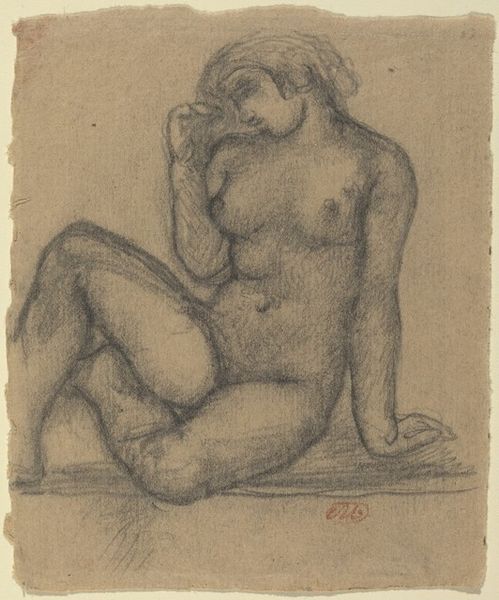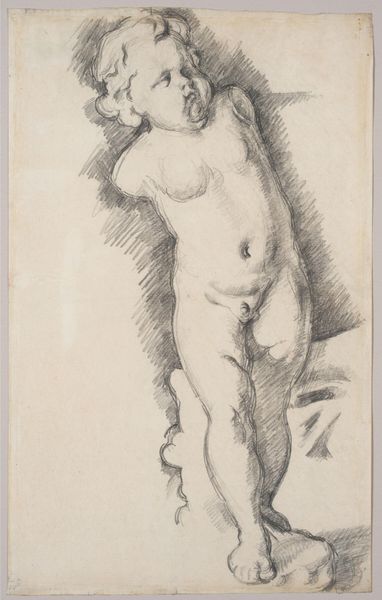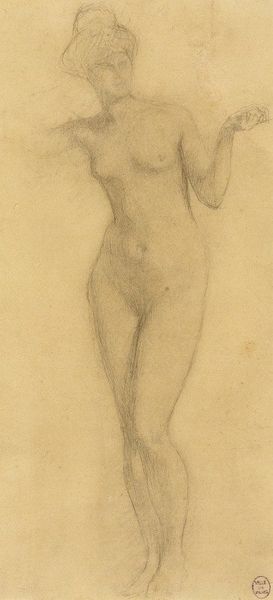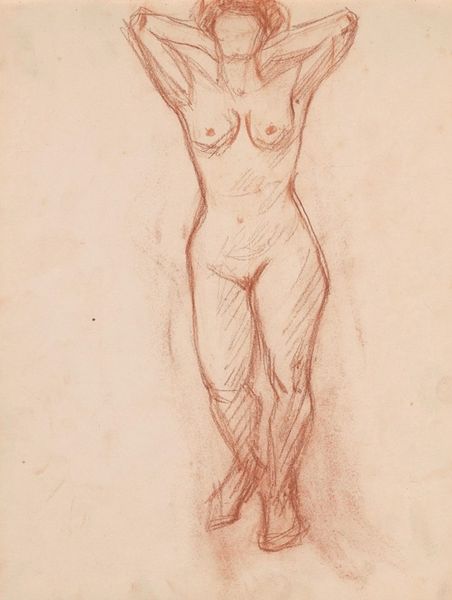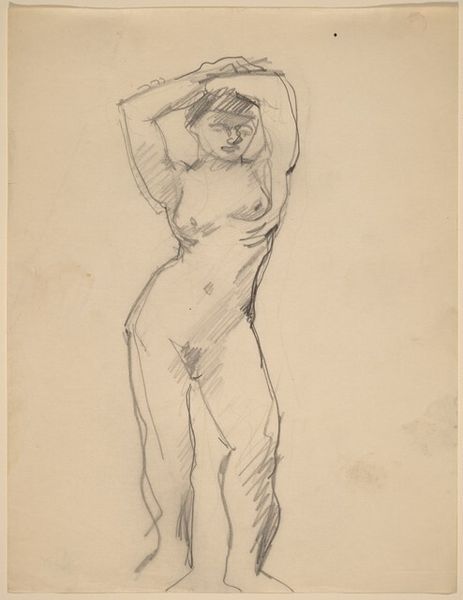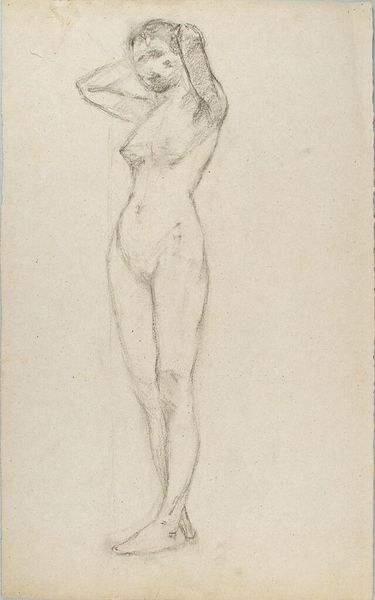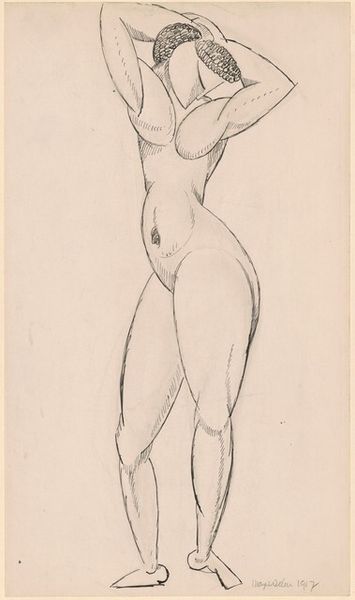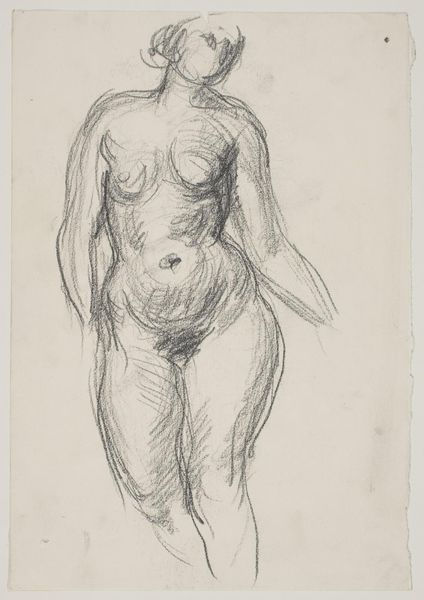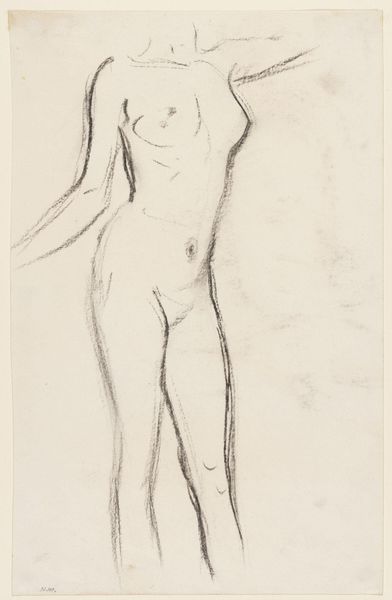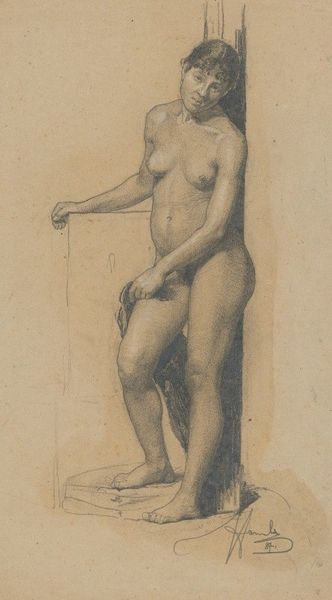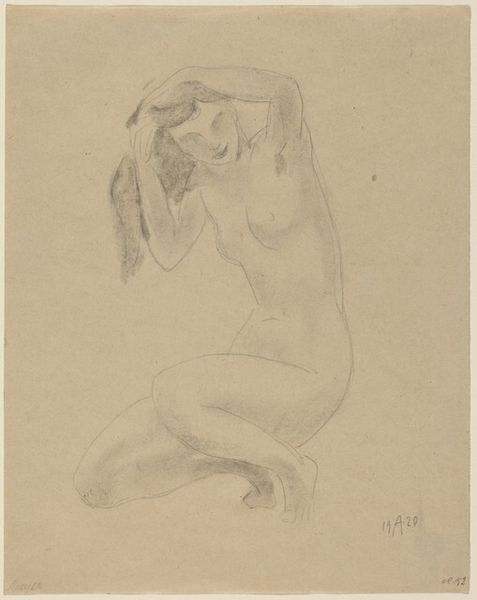
drawing, charcoal
#
drawing
#
figuration
#
charcoal
#
nude
#
realism
Copyright: Public Domain: Artvee
Curator: Looking at this drawing, the vulnerability is almost palpable, wouldn't you say? Editor: Absolutely. The figure has a striking rawness. Pierre Puvis de Chavannes completed this charcoal drawing, titled "Femme nue à genou, de face," in 1861. Its straightforward, confrontational gaze forces us to consider the position of the subject. Curator: The term "figure study" comes to mind. There's an immediate sense of observation and draftsmanship, a dedication to capturing a moment. The subject's pose seems to evoke feelings of longing and perhaps even a bit of fear or reluctance. Kneeling is, after all, a powerful, multi-layered symbol, historically representing humility, supplication, and repentance, among other things. Editor: Precisely, and understanding the gaze in this context, it becomes about questioning societal roles of women. Does her vulnerability signify submissiveness or defiance? Is it fair for an artist – historically male – to render her thus? Curator: These questions surrounding artistic expression are really significant. We should also observe that this image adheres to Realism, focusing on depicting subjects as they were perceived rather than idealizing. The use of charcoal creates contrasts of light and shadow, reinforcing the complexity of her figure. It could be argued that this work rejects aesthetic idealization. Editor: To a certain degree, but one might counter that it inevitably transforms her into an object for artistic consumption. It makes me consider who got to dictate what "realism" looked like. I wonder what other possibilities were available. What does this particular pose communicate about the politics of the nude in nineteenth-century France? Curator: Those are incredibly crucial viewpoints. Ultimately, artwork interpretation will depend on an individual's personal, societal, and historical framework. This drawing creates an enduring symbolic connection despite these arguments, pushing us to consider not just the artist's abilities, but also how symbols carry on through time. Editor: True. This close examination, this constant contextualization – that's how art transcends time. It’s a continual discussion between us and those who created it, and the eras and identities which inevitably shape both.
Comments
No comments
Be the first to comment and join the conversation on the ultimate creative platform.
